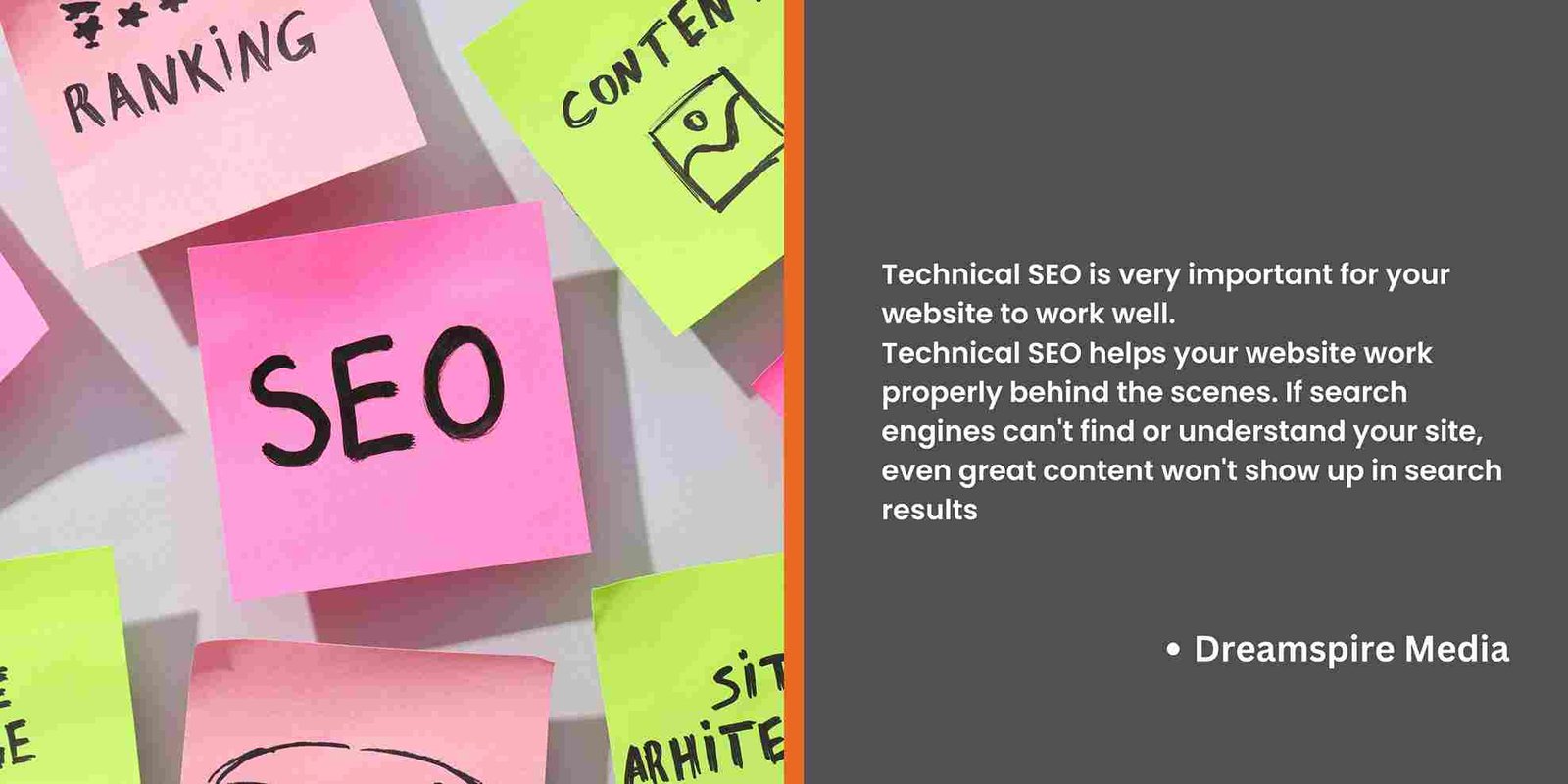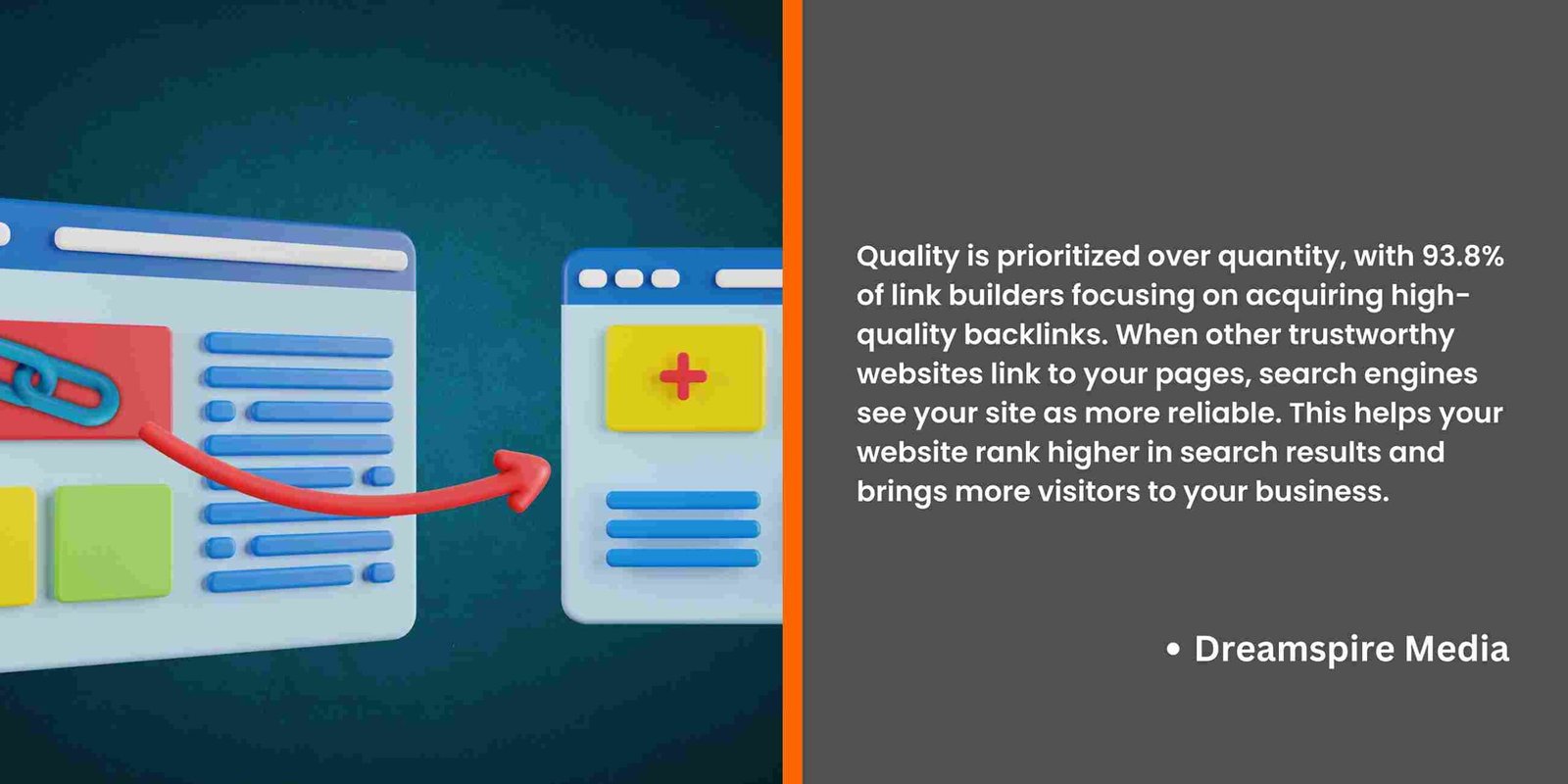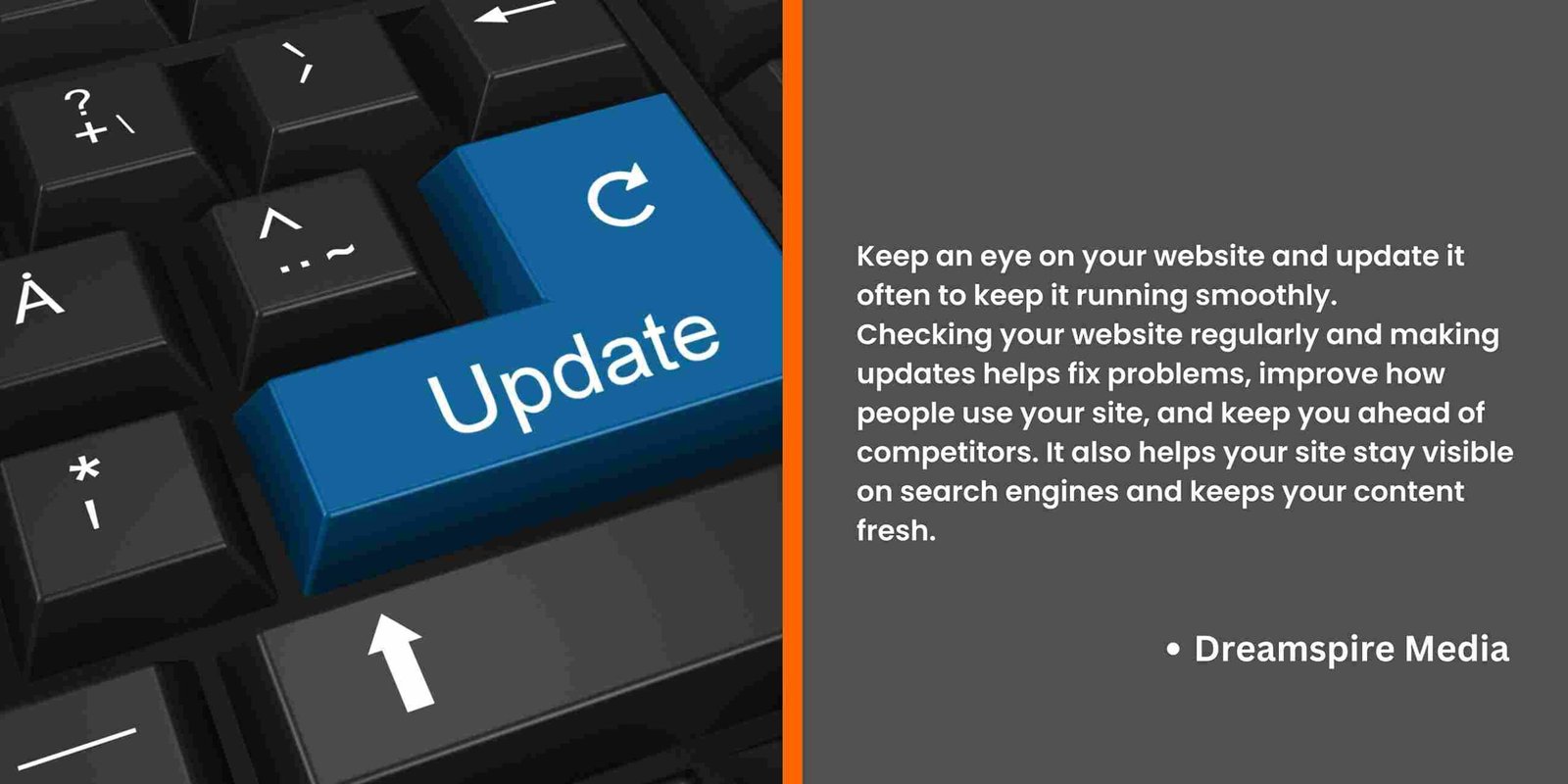In today’s digital-first world, a strong online presence is critical for any business looking to grow and thrive. However, many small and medium-sized businesses (SMEs) struggle to get the most out of their digital marketing efforts, especially when it comes to Search Engine Optimization (SEO).
SEO is the process of optimizing your website to rank higher in search engine results, increasing the likelihood that potential customers will find your business online.
While many businesses spend money on social media marketing and even Google Ads, SEO remains an underutilized powerhouse that can help you organically attract traffic without paying for each click.
But how do you get started? How do you know if your website is truly optimized for search engines?
The answer lies in an SEO audit. In this guide, we’ll walk you through everything you need to know about an SEO audit, why it’s important, and what you should check.
We’ll break it down into simple, easy-to-understand sections covering the essential aspects of SEO, including technical SEO, on-page SEO, content SEO, local SEO, and more.

What is an SEO Audit?
An SEO audit is a comprehensive review of your website’s performance in search engines like Google.
It’s like taking your website to the doctor for a check-up. Just as you visit a doctor to assess your health and make improvements, an SEO audit assesses your website’s health in terms of search engine visibility.
The purpose of an SEO audit is to identify issues that could be preventing your website from ranking well in search engine results. It also highlights opportunities to improve your site’s overall performance and user experience.
Why is an SEO audit important? Because, without a proper audit, you could be missing out on potential customers.
Poor rankings in search results mean fewer people are finding your business, which can directly impact your sales and revenue.
Let’s break down what to check in your SEO audit, making it easy for you to understand and implement.
Free Comprehensive SEO Checklist
Unlock Your Website’s Full Potential with Our FREE SEO Checklist and Transform Your Online Presence in Just 30 Days!
You’ll receive an instant download with step-by-step strategies covering technical SEO, on-page optimization, content best practices, and local search techniques.
This easy-to-follow roadmap will help you identify hidden optimization opportunities and save hours of research and guesswork.
SEO Audit Checklist: What Needs Fixing
1. Technical SEO: Fixing the Foundation
Technical SEO is the behind-the-scenes work that ensures your website can be crawled, indexed, and understood by search engines. It’s like ensuring that your website’s structure is sound, like a strong building foundation.
Without it, everything else (like your content or marketing efforts) can collapse. Here are the key areas of technical SEO to audit:
a. Website Speed
Search engines like Google prioritize websites that load quickly. Users also tend to leave websites that take too long to load.
If your site is slow, not only will your rankings suffer, but your potential customers might leave before even seeing what you offer.
- Why it matters: Google uses site speed as a ranking factor. A slow website provides a poor user experience and lowers conversion rates.
- How to check: You can use free tools like Google PageSpeed Insights or GTMetrix to analyze your site’s speed. These tools will give you recommendations to improve loading times, such as compressing images or reducing unnecessary code.
- How to fix it: Use tools like Google PageSpeed Insights or GTMetrix to identify speed issues. Common fixes include compressing large images, reducing the number of HTTP requests, using a content delivery network (CDN), and enabling browser caching.
b. Mobile-Friendliness
More people are browsing the internet on their mobile phones than ever before.
In fact, Google uses mobile-first indexing, meaning it primarily looks at the mobile version of your website to determine rankings.
If your website isn’t mobile-friendly, you could lose valuable traffic and rankings.
- Why it matters: A mobile-friendly site ensures that users have a good experience on smartphones and tablets, which is essential for both user satisfaction and SEO.
- How to check: You can use Google’s Mobile-Friendly Test to see if your website is mobile-responsive.
- How to fix it: Make sure your website is responsive, meaning it adjusts to different screen sizes. Use tools like Google Mobile-Friendly Test to identify issues with your site’s mobile responsiveness.
c. Crawlability and Indexability
For search engines to show your website in search results, they need to be able to “crawl” and “index” your pages.
Crawlability refers to the ability of search engines to visit and read the content on your website.
Indexability means that the content on your pages is stored in the search engine’s index, where it can be shown to users.
- Why it matters: If search engines can’t crawl and index your site, it won’t appear in search results. This means you’ll miss out on organic traffic.
- How to check: You can use Google Search Console to ensure your website is being crawled and indexed properly. Check the Crawl Errors report to identify any issues.
- How to fix it: Use Google Search Console to identify crawling issues and ensure that there are no broken links or pages blocking search engines from crawling your site.
d. SSL Certificate (HTTPS)
An SSL certificate ensures that your website is secure by encrypting the connection between the user’s browser and your server.
Websites with SSL certificates use “https://” in their URLs rather than “http://.”
- Why it matters: Google has confirmed that SSL certificates are a ranking factor. Plus, users are more likely to trust a secure website, which can improve your credibility and conversion rates.
- How to check: Check if your website is using HTTPS by looking at the URL in your browser. If it starts with “http://” instead of “https://,” your site needs an SSL certificate.
- How to fix it: Ensure your website uses HTTPS by installing an SSL certificate. Many web hosting providers offer SSL certificates for free or at a low cost.
e. Site Structure and Navigation
A clear, logical site structure helps both users and search engines navigate your website easily.
A well-organized site with simple navigation encourages users to stay longer and visit more pages, which boosts engagement and SEO.
-
Why it matters: A cluttered or confusing site structure makes it difficult for search engines to crawl and index your pages. If users can’t find what they’re looking for, they’ll leave.
-
How to fix it: Ensure your website has a clear hierarchy, with important pages linked at the top and category pages clearly labeled. Use breadcrumbs to make navigation easier for users and search engines alike.

2. On-Page SEO: Optimizing Your Content
On-page SEO refers to the elements of your website that you can control and optimize directly, such as content, title tags, meta descriptions, and headers. It’s like the content of your brochure—it needs to be clear, appealing, and relevant to your audience.
Here are the key areas to audit in on-page SEO:
a. Title Tags and Meta Descriptions
Title tags and meta descriptions are like the headlines and summaries that appear in search results.
They provide a snapshot of what your page is about.
Properly optimized title tags and meta descriptions can improve your click-through rates (CTR), which can indirectly improve your rankings.
- Why it matters: If your title tags and meta descriptions are not optimized, search engines might not fully understand the content of your page. This can hurt your rankings.
- How to check: Check that each page has a unique and optimized title tag and meta description. Aim to include primary keywords naturally in these elements.
- How to fix it: Make sure each page on your site has a unique title tag that includes the main keyword for that page. Keep title tags around 40-60 characters (below 600 pixels) to prevent them from being cut off in search results. Also, write clear and compelling meta descriptions with relevant keywords. Aim for 150-160 characters.
Recently, search engines like Google choose what they show visitors from your website content.
b. Header Tags (H1, H2, etc.)
Header tags (like H1, H2, etc.) help structure your content for both search engines and users.
These tags break your content into sections, making it easier to read and understand.
- Why it matters: Search engines use header tags to understand the hierarchy and content of your page. They also help users easily navigate your content.
- How to check: Make sure each page has a unique H1 tag that includes your primary keyword. Use H2 and H3 tags to break your content into sections. Help readers understand the importance your content better with headers.
c. Keyword Optimization
Keywords are the terms and phrases that users search for when looking for information online.
Optimizing your content with relevant keywords helps search engines understand what your page is about.
- Why it matters: Without keyword optimization, your content may not appear in search results for relevant queries.
- How to check: Review your content to ensure that you’re using relevant keywords naturally in your title, headers, and body text. Tools like Google Keyword Planner or Ubersuggest can help you find keywords related to your business.
- How to fix it: Conduct keyword research to find high-traffic, low competition, relevant keywords for your business. Use these keywords naturally in your content, titles, meta descriptions, and headers.
If you’re just starting, use long-tail keywords, especially in a specific area, to get traffic that your competitors are not focused on.
d. Image Optimization
Images are essential for engaging users, but they also need to be optimized to improve page load times.
Additionally, image alt text helps search engines understand what the image is about, which can improve rankings in image search.
- Why it matters: Optimized images improve loading times and help with accessibility and SEO.
- How to check: Compress images to reduce file size and add descriptive alt text for each image on your site.
Most people still leave the title as the default stock image title, change this.
3. Content SEO: Creating High-Quality Content
Content is king in the world of SEO. High-quality, relevant, and engaging content helps your website rank higher in search results and provides value to your visitors. Here are the key areas to focus on:
a. Content Relevance
Your content should be valuable, relevant, and helpful to your audience.
Search engines like Google prioritize websites with high-quality, user-friendly content.
-
Why it matters: High-quality content leads to better engagement, which signals to search engines that your page is worth ranking.
-
How to check: Evaluate whether your content meets the needs of your target audience. Is it answering their questions? Is it well-written and free of errors?
b. Content Length
Longer, in-depth quality content tends to perform better in search results because it can cover a topic more thoroughly. However, quality should always come before quantity.
- Why it matters: Detailed, informative content is more likely to rank higher and attract links from other websites.
- How to check: Aim for content that is at least 1,000-2,000 words, but make sure it adds value and is not just “filler.”
- Write content that thoroughly covers a topic and answers the questions your audience is asking. Use original research, case studies, and examples to make your content stand out.

c. Content Updates
SEO is an ongoing process, and content that is regularly updated with fresh information performs better in search engines.
-
Why it matters: Search engines favor content that is up-to-date and relevant to current trends and needs.
-
How to fix it: Regularly update your content, say 3-6 months, especially evergreen pages like blogs and landing pages, with the latest information.
d. Internal Linking
Internal linking refers to linking to other pages or blog posts within your own website.
This helps users navigate your website and allows search engines to crawl your site more efficiently.
-
Why it matters: Effective internal linking helps spread link equity across your website, which boosts SEO rankings. It also improves the user experience by guiding them to related content.
-
How to fix it: Add internal links to relevant pages and blog posts. Use descriptive anchor text that accurately describes the content being linked to, and ensure the links make sense in context.
e. User Experience (UX)
The user experience of your website, including ease of navigation, layout, and accessibility, plays a significant role in SEO.
A good UX ensures that visitors stay on your site longer and are more likely to engage with your content.
- Why it matters: Search engines prioritize websites that provide a positive user experience. Factors like bounce rates, time on page, and interactions all signal to Google how users feel about your site.
- How to fix it: Ensure your site is easy to navigate, mobile-friendly, and visually appealing. Also, make sure your website’s information is accessible, with clear calls to action and organized content.
4. Local SEO: Improving Your Visibility for Local Searches
For businesses with a physical location or those serving a specific geographic area, local SEO is essential.
Local SEO helps your business appear in search results when people search for products or services near them.
This is mostly valuable for businesses that are location-based – businesses that customers would usually use keywords like ‘near me’, ‘around me’, ‘[name of location]’ and so on.
a. Google My Business (GMB)
Creating and optimizing your Google My Business listing is one of the most important steps in local SEO.
This free tool allows you to manage your business information on Google and appear in local search results and Google Maps.
- Why it matters: Optimized GMB listings help your business appear in local searches, increasing your chances of being found by nearby customers.
- How to check: Make sure your business name, address, phone number, and website are accurate and consistent across the web.
- How to fix it: Claim and verify your Google My Business listing. Ensure your business information (address, phone number, hours of operation) is accurate and up to date. Add photos, update your services, and encourage customers to leave reviews.
c. Reviews and Ratings
Customer reviews and ratings are critical for local SEO.
Google uses reviews to gauge the reputation and trustworthiness of your business.
- Why it matters: Positive reviews build trust and credibility, while negative reviews can hurt your rankings and online reputation. Engaging with reviews also shows that you care about your customers.
- How to fix it: Encourage satisfied customers to leave reviews on Google, Yelp, and other review platforms. Respond to all reviews, both positive and negative, to show that you value customer feedback.

5. Off-Page SEO: Building Authority
While on-page and technical SEO focus on improving your website, off-page SEO deals with building your site’s reputation and authority outside your website.
The most significant off-page SEO factor is acquiring quality backlinks from other websites.
Off-page SEO refers to activities you can do outside your website to improve its rankings, such as acquiring backlinks.
When other reputable websites link to yours, it signals to search engines that your content is valuable.
a. Backlinks
Backlinks are links from other websites to yours.
The more high-quality backlinks your site has, the more authoritative and trustworthy it appears to search engines.
Quality backlinks from authoritative sites can significantly improve your rankings.
- Why it matters: Backlinks act as “votes of confidence” from other websites. High-quality backlinks from authoritative sources improve your SEO rankings and drive more traffic to your site.
- How to check: Use tools like Ahrefs or SEMrush to analyze your backlink profile and identify opportunities for acquiring more high-quality backlinks.
- How to fix it: Build a strong backlink profile by earning links from reputable websites. This can be done through content marketing (such as guest blogging), influencer outreach, partnerships, and creating shareable content.
b. Social Media Signals
While social media may not directly impact SEO rankings, social signals (likes, shares, comments) can still influence search engine visibility by driving traffic to your website and improving brand awareness.
-
Why it matters: Social signals help expand the reach of your content and drive traffic, which can indirectly improve your SEO performance.
-
How to fix it: Regularly promote your content on social media platforms. Encourage sharing, engagement, and interactions. Ensure that your social media profiles are optimized and linked back to your website.

6. Regular Monitoring and Continuous Improvement
SEO is not a one-time task; it’s an ongoing process that requires regular monitoring and continuous optimization.
a. Use SEO Tools for Monitoring
There are several tools available that can help you monitor your website’s SEO performance.
Tools like Google Analytics, Google Search Console, Ahrefs, and SEMrush provide valuable insights into your site’s traffic, keyword performance, and any issues that may need attention.
-
Why it matters: Monitoring your SEO performance helps you identify areas that need improvement and track the impact of your optimization efforts over time.
-
How to fix it: Set up and regularly check Google Analytics and Google Search Console to monitor your traffic, keywords, backlinks, and overall site health. Use the data to guide your ongoing SEO efforts.
b. Keep Up with SEO Trends
SEO is constantly evolving, and search engine algorithms are frequently updated.
What worked yesterday may not work today, so it’s important to stay informed about the latest SEO trends and algorithm changes.
-
Why it matters: Staying updated helps you adapt your SEO strategies to keep up with search engine changes, ensuring that your site remains competitive in search results.
-
How to fix it: Subscribe to our SEO blogs to stay updated on the latest industry trends, updates, and best practices.

Conclusion: Why an SEO Audit is Essential for Business Growth
Doing a full SEO audit is one of the best things you can do to make your website easier to find, bring in more visitors, and grow your business.
If you’re a small business just starting or a medium-sized company trying to reach more people, an SEO audit will help you improve your website and make it show up higher in search results.
By looking at important areas like technical SEO, on-page SEO, content SEO, local SEO, and off-page SEO, you can find and fix any problems that might be hurting your website’s performance.
When you have a good SEO plan, more people will visit your site, engage with your content, and become paying customers.
SEO isn’t something you do just once—it’s something you need to keep working on. By checking your website regularly, making changes, and improving your SEO, you’ll see more visitors, better rankings in search engines, and more business growth.
At first, doing an SEO audit might seem hard, but with the right tools, steps, and help, you can make your website work better for your business. Do an SEO audit today and see the results in more people visiting your site, engaging with your business, and helping it grow.
When you focus on SEO, you’re not just fixing your website’s problems. You’re also building your business for long-term success and making your brand stronger in the digital world.
